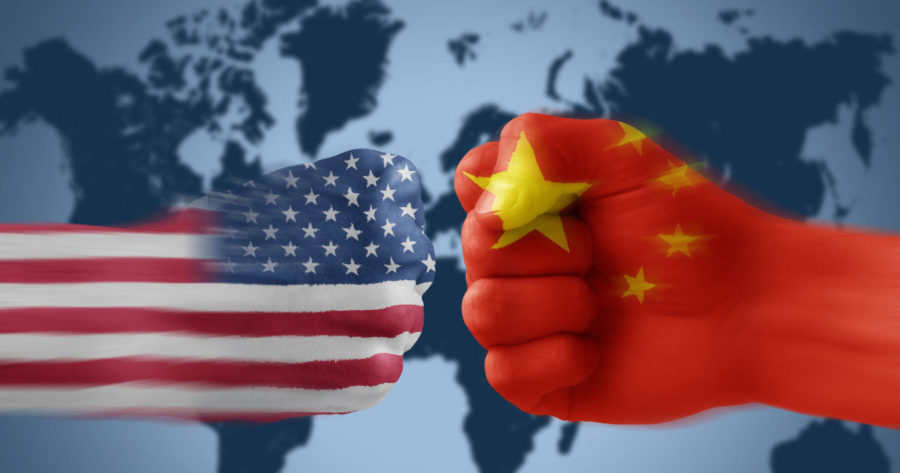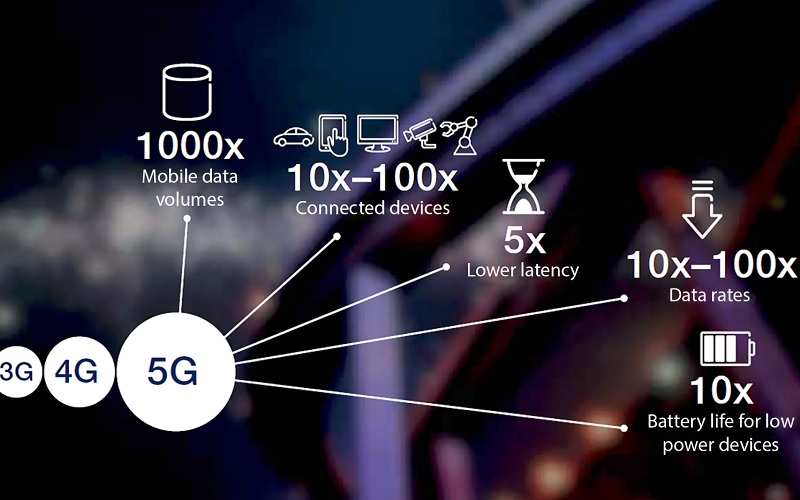There was a time when the world's two great superpowers were obsessed with nuclear technology. Today there is a struggle between the United States and China for wireless technologies, the very ones that promise to connect your toaster to the Internet …

A source
Original material by Will Knight, MIT Technology Review
The two countries are embroiled in a political war over a Chinese telecommunications company Huawei. Recently, the American side has increased the degree of confrontation from lingering criticism Huawei to accusations of the corporation in fraud and theft of information constituting trade secrets, as well as in relations and cooperation with the government and the armed forces of China.
The Chinese company has denied the allegations and will defend its views on privacy and security. Meanwhile, US allies, including the UK, New Zealand, Australia, Canada, Germany and Japan, have imposed restrictions on the use of equipment Huawei or are willing to do so in the interests of national security. However, between the heading lines is a controversy over the coming wave of network technology 5G and who owns it.
To understand the technology itself and its role in this situation, it is necessary to know the following points.
What is 5G?
5G is not a protocol or a device; the term refers to an array of networking technologies that can work together to 'over the air' connect everything from self-driving cars to household appliances. It is expected to deliver up to 20 gigabits per second throughput, which is enough for instant HD movie downloads and virtual and augmented reality experiences. On your smartphone.

A source
The first 5G smartphones and infrastructure for the transition will be available this year, but the full transition will take many years.
How is 5G better?
The networks 5G operate in two different frequency bands. In one, they use the same frequencies as existing 4G and Wi-Fi networks, using a more efficient coding algorithm and wider channels to achieve speed gains of 25 to 50 percent. In the second mode, networks 5G will use higher frequencies of millimeter waves, which can transmit information faster, even over short distances.
Due to the fact that millimeter waves only work at short distances, more transmitters are needed for 5G. There are many transmitters, sometimes at a distance of several tens of meters from each other. Connected devices and older devices will seamlessly switch between these transmitters.

A source
To increase bandwidth, cellular networks 5G will use an improved version of multi-antenna technology. It will allow hundreds of antennas to work in parallel, which will increase speed and provide a low latency – about a millisecond (in 4G – 30 milliseconds) and increase the number of simultaneously connected devices.
Finally, full-duplex communication technology will further increase data storage capacity by allowing transmitters and devices to send and receive data on the same frequency. This is done using specialized circuits to ensure that there is no mutual interference from incoming and outgoing signals.
Security risks
One of the security threats posed by the implementation 5G is the very breadth of application of the new generation of networks. One of the tenets 5G is to avoid wired connections, which opens the door for network connectivity and over-the-air updates to even more devices such as home appliances and industrial units. Powered by a seamless and never 'braking' channel 5G, unmanned vehicles, industrial robots and hospital equipment will function smoothly.
As with any new technology, security vulnerabilities appear early enough. For example, European researchers have already discovered weaknesses in how cryptographic keys will be exchanged in 5G. With so many devices connected, the risk of data theft and sabotage increases significantly.
Due to the fact that 5G will be compatible with existing Wi-Fi networks and third and fourth generation networks (in some cases using multi-connected networks, completely disabling central network management), existing security problems will move to new ones. networks. UK Government Communications Center will provide a report on security issues in technology Huawei in the coming weeks, possibly related to 4G.

A source
With the fifth generation, a layer of control software will help ensure seamless connectivity, virtual networking, and new networking capabilities. The network operator will be able to create a private 5G – network, for example, for a bank, which can use the functional features of this network to verify the identity of application users.
Be that as it may, it is this layer of software that will be the source of new ways to carry out espionage and manipulation of information for a malicious network operator. It can also provide a new vector for attacks, while hardware bugs can allow users to switch between virtual networks, peeping and stealing information in the process.
Could 5G be more secure?
All of these security threats paint an unpleasant picture, but there are technical solutions for all of these problems. Careful use of cryptography can help secure communication by protecting information as it travels through various systems and virtual networks, even shielding it from the companies that own and use the equipment. Such coding schemes can protect against hacking, unauthorized connection and information interception.
“If you do it right, you actually end up with a more stable system,” said Muriel Medard, professor of network coding and secure communications research at the Massachusetts Institute of Technology (MIT).
Why is the involvement of Huawei in 5G so worrying?
Huawei as the world's largest supplier of network equipment and the second largest smartphone manufacturer has the advantage and every chance of getting the lion's share of the market 5G, which in five years, by some estimates, will be valued at 123 billion dollars.
A number of measures to counteract the expansion of the company into Western markets could spur competitors to catch up. But around 5G there are also a number of legitimate security concerns and reasons to believe that the dominance of one company in this area could add problems. Apparently, the US government decided that it was simply risky to allow a Chinese company to control most of the infrastructure 5G.
A source
The focus on Huawei makes sense given the importance of 5G, new security challenges and challenges, and the fact that the Chinese company is positioning itself as a very large player. All these fears are perceived to be quite reasonable, especially given the customary accountability for Chinese companies to the government of the country, indicated in a number of accusations of links Huawei with military structures and cyber troops, and growing ties between private industry and the Chinese authorities.
The ongoing confrontation with Huawei also shows how vital new technology is for global competition, economic power, and even international security.
Original material by Will Knight, MIT Technology Review
Despite the slightly humorous tone at the beginning of the material, the subject of controversy is quite serious, the money is even more serious, for which there is a struggle, which has passed into the phase of open confrontation. The winner is not at all so obvious, both sides will not miss their own and will try to take everything from the situation, at least in their markets. Apparently, the Chinese side is doing better, but it's not just about Huawei, it's still fresh in my memory tradition litigation with ZTE.
From the point of view of a user who potentially, albeit gradually, will switch to 5G, I would not want these 'games' of large corporations to affect the implementation and development of infrastructure and the networks themselves. Let's hope that Russian operators will be able to stay on the sidelines and, if possible, remain neutral in this dispute.

